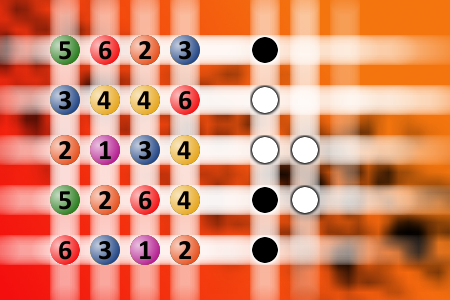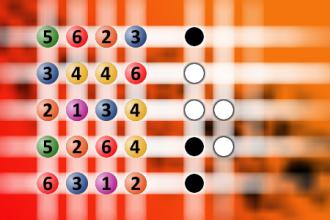What a winning combination?
The computer chose a secret code (sequence of 4 digits from 1 to 6). Your goal is to find that code. Black circles indicate the number of hits on the right spot. White circles indicate the number of hits on the wrong spot.Correct answers: 27
The first user who solved this task is Thinh Ddh.
#brainteasers #mastermind

A man walked into a cafe...
A man walked into a cafe,went to the bar and ordered a beer.
"Certainly, Sir , that'll be one cent."
One Cent?" the man exclaimed.
He glanced at the menu and asked: "How much for a nice juicy steak and a bottle of wine?"
"A nickel," the barman replied.
"A nickel?" exclaimed the man.
"Where's the guy who owns this place?"
The bartender replied: "Upstairs, with my wife."
The man asked: "What's he doing upstairs with your wife?"
The bartender replied: "The same thing I'm doing to his business down here."
"Certainly, Sir , that'll be one cent."
One Cent?" the man exclaimed.
He glanced at the menu and asked: "How much for a nice juicy steak and a bottle of wine?"
"A nickel," the barman replied.
"A nickel?" exclaimed the man.
"Where's the guy who owns this place?"
The bartender replied: "Upstairs, with my wife."
The man asked: "What's he doing upstairs with your wife?"
The bartender replied: "The same thing I'm doing to his business down here."

